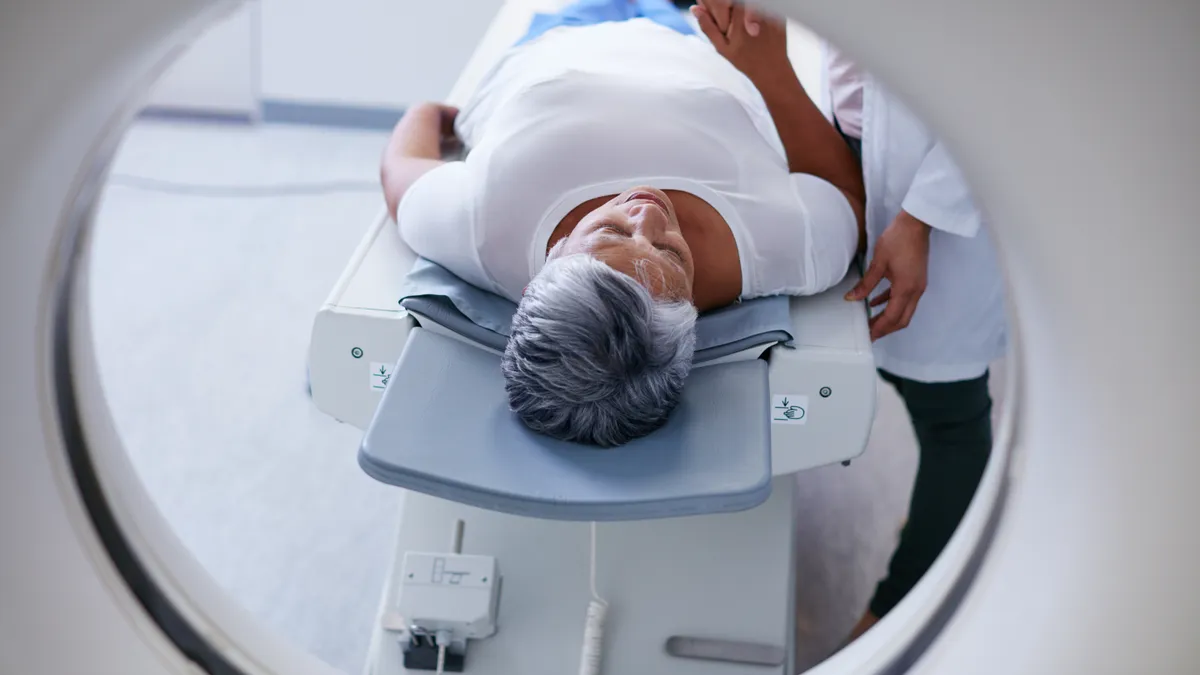Dive Brief:
- Magnetic resonance imaging (MRI) is as safe as cardiac catheterization for making treatment decisions for patients with stable chest pain, a study published in the New England Journal of Medicine has concluded. The study compared the two methods as the first diagnostic test given to people with typical angina symptoms.
- The data showed use of myocardial perfusion cardiovascular MRI in guiding initial management of patient care was noninferior to coronary angiography combined with a blood pressure measurement called fractional flow reserve for adverse events at one year.
- Study author Eike Nagel said in a press release from Goethe University Frankfurt he hopes the less-invasive MRI scans will become a method of first choice and more widely available, reducing the need for cardiac catheterizations.
Dive Insight:
Cardiac catheterization combined with fractional flow reserve (FFR), an invasive procedure that uses a special guide wire to measure blood pressure within a coronary artery, is the current standard for visualizing the presence and distribution of coronary artery disease. Physicians use the test to assess whether a patient should be referred for revascularization, which involves either coronary artery bypass graft surgery or stent placement.
Coronary angiography is done during cardiac catheterization. An iodine-containing contrast dye visible in X-rays is injected through the catheter, and the images show the dye as it flows through the heart arteries.
Cardiac MRI uses a magnetic field and radio frequency pulses to produce detailed pictures of the heart. A cardiovascular MRI does not require a catheter to be inserted into a patient's arteries. A contrast dye containing a metal called gadolinium may be given via an IV line. Fewer patients are allergic to gadolinium than iodine.
In the Goethe University study, called MR-Inform, physicians tracked how many patients died, suffered a heart attack, required a repeated vascular dilation, or had continued heart symptoms. In the patients examined by MRI, fewer required a diagnostic cardiac catheterization (35.7%) than those in the FFR group (45%).
MRI was noninferior to FFR on the composite primary outcome of death, heart attack or revascularization within one year, at 3.6% of MRI patients versus 3.7% of the FFR group. In addition, the percentage of patients free from angina at one year — 49.2% in the cardiovascular MRI group and 43.8% in the FFR group — did not differ significantly between the two groups, the study said.
Nagel, director of the Institute for Experimental and Translational Cardio Vascular Imaging at Goethe University, said examination by MRI has many advantages: The procedure takes about 40 minutes, patients receive a small cannula in their arm, and patients are not subject to radiation.
"This means that patients with stable chest pains who previously would have received cardiac catheterization can alternatively be examined with MRI," Nagel said. "The results for the patients are just as good."
The study received financial support from the British National Institute of Health Research, the German Centre for Cardiovascular Research, and Bayer AG Deutschland.










